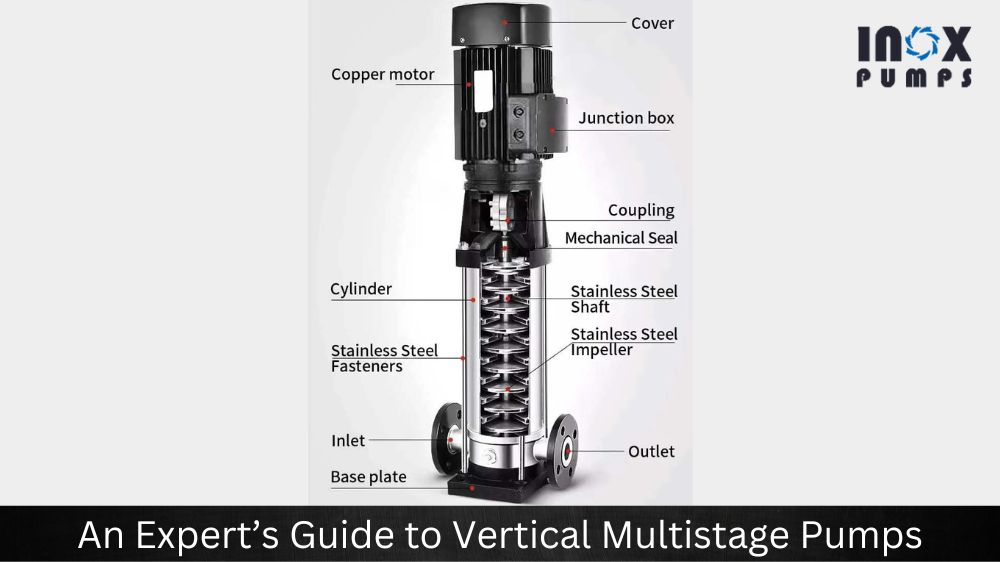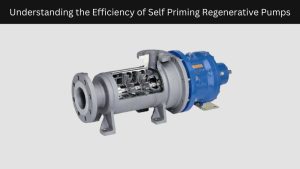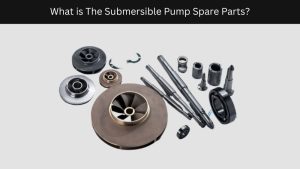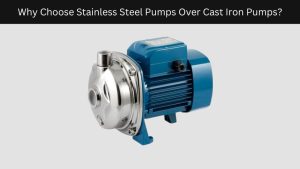Vertical multistage pumps are a type of centrifugal pump designed to handle liquids in various industrial applications. They are designed to save space, energy and have numerous features such as low noise levels and high-pressure capabilities. In this blog post, we will provide
- an expert’s guide to vertical multistage pumps,
- detailing their design, how they operate,
- their advantages and disadvantages, and
- some typical applications where they can be used.
Design of Vertical Multistage Pumps
Vertical multistage pumps are designed with multiple impellers connected in series, using either a horizontal or vertical configuration. The impellers are designed to increase the pressure of the fluid as it flows from one stage to the next. The pump casing encloses and protects the pump’s internal components. It also includes an inlet and outlet line, fill and drain ports. Common materials for these pumps are cast iron casings, stainless steel, or a combination of both. The impellers can be made of stainless steel or bronze to deliver extended service life and reduce wear.
How Vertical Multistage Pumps Operate
The operation begins with suction that brings the fluid into the first impeller, where the impeller accelerates the fluid from the inlet to discharge under high pressure before it flows onto the next stage. The resulting fluid pressure increases at each stage as it flows from discharge to the inlet of the following stage. The last stage, discharge, is often connected to a discharge valve for flow control. These pumps are designed to operate as a dynamic system. This approach ensures that pump performance is adjusted to match changes in flow conditions and adjusts the motor’s power consumption. This design feature means that these pumps are self-regulating and very efficient.
Advantages and Disadvantages of Vertical Multistage Pumps
One major advantage of a vertical multistage pump is its compact design, which requires less floor space than other pump types. Its internal components are protected from the environment, translating into a long service life. These pumps also offer flexible designs, allowing customization for specific applications and increased durability. However, while they have numerous advantages, they also have some drawbacks. For example, one disadvantage is their relatively high initial cost, as they are primarily used in demanding applications. Parking space for maintenance may also become a concern due to the pump’s vertical design.
Typical Applications for Vertical Multistage Pumps
Vertical multistage pumps are excellent at pumping clean, non-abrasive fluids in various industrial applications, such as oil refineries, chemical processing plants, power plants, high-rise buildings, and wastewater treatment plants. By being used in high-rise buildings, vertical multistage pumps provide high-pressure water to the building floors, making it possible to operate numerous fixtures simultaneously without affecting their operations.
Conclusion:
In conclusion, vertical multistage pumps are an excellent choice for clients who require high-pressure pumping applications. Their compact design, flexible configuration and customizable features make them energy-efficient, cost-effective and provide long service life. Even though they have some disadvantages, the benefits outweigh the costs for applications with demanding requirements. To choose the ideal multistage pump, working with industry leaders is highly recommended to ensure a suitable and efficient installation.






